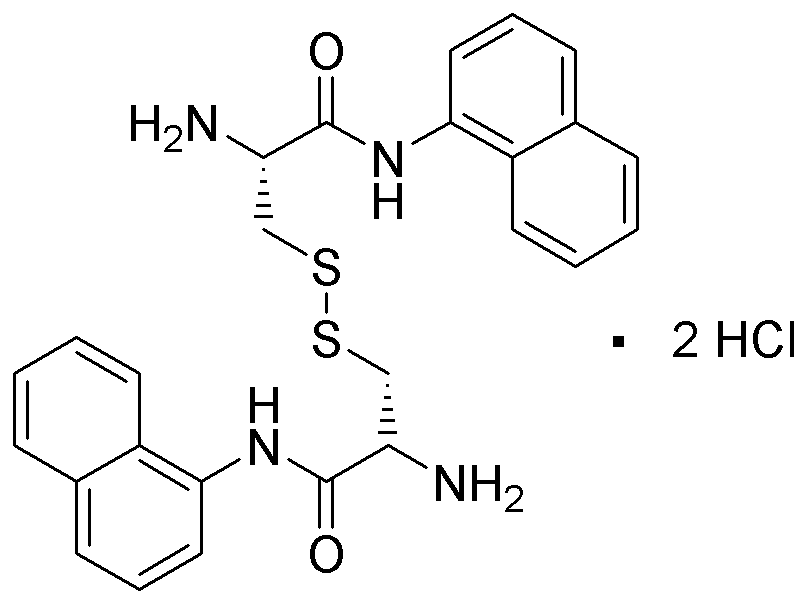L-Cystine bis(b-naphthylamide) dihydrochloride is widely utilized in research focused on:
- Pharmaceutical Development: This compound is used in drug formulation studies, particularly in the development of medications targeting oxidative stress and related diseases.
- Biochemical Research: It serves as a valuable reagent in the synthesis of peptides and proteins, aiding researchers in understanding protein interactions and functions.
- Antioxidant Studies: The compound is explored for its potential antioxidant properties, making it relevant in studies aimed at combating oxidative damage in cells.
- Material Science: It is applied in the development of novel materials, particularly in creating polymers that require specific chemical properties for enhanced performance.
- Cosmetic Formulations: This chemical is investigated for its potential use in skincare products, focusing on its ability to promote skin health and combat aging effects.
General Information
Properties
Safety and Regulations
Applications
L-Cystine bis(b-naphthylamide) dihydrochloride is widely utilized in research focused on:
- Pharmaceutical Development: This compound is used in drug formulation studies, particularly in the development of medications targeting oxidative stress and related diseases.
- Biochemical Research: It serves as a valuable reagent in the synthesis of peptides and proteins, aiding researchers in understanding protein interactions and functions.
- Antioxidant Studies: The compound is explored for its potential antioxidant properties, making it relevant in studies aimed at combating oxidative damage in cells.
- Material Science: It is applied in the development of novel materials, particularly in creating polymers that require specific chemical properties for enhanced performance.
- Cosmetic Formulations: This chemical is investigated for its potential use in skincare products, focusing on its ability to promote skin health and combat aging effects.
Documents
Safety Data Sheets (SDS)
The SDS provides comprehensive safety information on handling, storage, and disposal of the product.
Product Specification (PS)
The PS provides a comprehensive breakdown of the product’s properties, including chemical composition, physical state, purity, and storage requirements. It also details acceptable quality ranges and the product's intended applications.
Certificates of Analysis (COA)
Search for Certificates of Analysis (COA) by entering the products Lot Number. Lot and Batch Numbers can be found on a product’s label following the words ‘Lot’ or ‘Batch’.
*Catalog Number
*Lot Number
Certificates Of Origin (COO)
This COO confirms the country where the product was manufactured, and also details the materials and components used in it and whether it is derived from natural, synthetic, or other specific sources. This certificate may be required for customs, trade, and regulatory compliance.
*Catalog Number
*Lot Number
Safety Data Sheets (SDS)
The SDS provides comprehensive safety information on handling, storage, and disposal of the product.
DownloadProduct Specification (PS)
The PS provides a comprehensive breakdown of the product’s properties, including chemical composition, physical state, purity, and storage requirements. It also details acceptable quality ranges and the product's intended applications.
DownloadCertificates of Analysis (COA)
Search for Certificates of Analysis (COA) by entering the products Lot Number. Lot and Batch Numbers can be found on a product’s label following the words ‘Lot’ or ‘Batch’.
*Catalog Number
*Lot Number
Certificates Of Origin (COO)
This COO confirms the country where the product was manufactured, and also details the materials and components used in it and whether it is derived from natural, synthetic, or other specific sources. This certificate may be required for customs, trade, and regulatory compliance.


